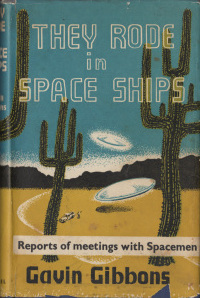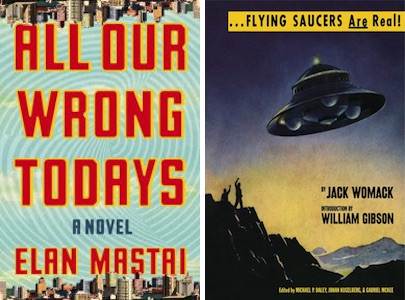What happens when the cost of a gleaming utopia is revealed? Nothing’s quite so narratively disorienting as the moment in which you learn that what you’d previously envisioned as an ideal society turns out to have a harrowing cost for a certain segment of the population. Warren Ellis and Chris Weston’s Ministry of Space is a perfect example of this: it tells the story of an alternate 20th century in which the U.K. took the lead in exploring and colonizing space. The result is visually resplendent: the design of the spacecraft looks simultaneously retro and boldly futuristic. It looks like a better world, a future that never was.
And then, at the very end, there’s a sting, as Ellis and Weston reveal the cost of these advancements, and the downside to a spacefaring nation that never shed its institutional prejudices as it began to reach for the stars. Suddenly those spaceships and orbiting stations looks a lot less inviting; that bold future we never had starts to look like one we were all lucky to avoid.
Revisiting “futuristic” imagery that’s become archaic in the last few decades is a favorite pastime for certain writers, artists, and creators. Tim Burton’s film Mars Attacks! blended contemporary cynicism with a plotline from a 1950s B-movie; the video game series Fallout is set in a future history that diverged from our own in the middle of the 20th century, and thus is decidedly retrofuturistic. But along with the appealing aesthetic and the design-infused advantages of tapping into this aesthetic, there’s also the danger of fetishizing some of the intolerance, paranoia, and bigotry that might unexpectedly accompany those retro elements.
Ray Vukevich’s short story “White Guys in Space” lays this out succinctly. It opens with Congress voting to abolish the 1960s: as a result, a sinister corporate overlord named Worldmaster Jones pops into existence, as do creepy aliens who immediately set their sights on earth. The vibe overall is a neatly-structured pastiche of mid-20th century pulp science fiction: enterprising young heroes, a scientist mentor, and the sort of aliens that wouldn’t be out of place on the cover of a 1940s science fiction magazine. Overall, it hits the balance necessary for this kind of story, echoing the archaic pulp storytelling of a bygone era while adding a sense of fundamental wrongness—a palpable awareness that something is deeply out of balance in this world. And it includes the classic time travel trope of someone looking to fix history and inadvertently making it much, much worse.
That paradox is very much at work in Elan Mastai’s novel All Our Wrong Todays. The narrator is a man named Tom Barren, and when the novel opens, he’s working for his father in an alternate version of our world that resembles “a dazzling acceleration of the postwar generation’s techno-utopian fantasies.” Energy is produced safely and in massive quantities, and as result, most of the frustrations of our modern world don’t exist. Cities with massive towers are the home of much of humanity, devices manage quotidian stresses, and while tragedies aren’t entirely absent, the odds of someone dying senselessly aren’t particularly high.
A pair of tragic events do occur, however, in spite of the relative safety and calm, prompting Tom to venture back in time, where he inadvertently alters history and creates a timeline in which the world from which he came is the stuff of science fiction. (In other words, he creates the world in which we all live.) It’s here that he grapples with the burden of what he’s done, as well as noting the differences between his world and ours. At one point, he notes that both punk and hip-hop never developed in his timeline–a kind of cultural shorthand for the sonic shortcomings of the borderline utopian. And, as the story progresses, so too does the question of time travel and its minutiae: without going into too many details, both the ways in which Tom’s own history was altered and the full range of history-altering possibilities of his mission in time come into play.
There are also plenty of knowing nods to the genre within the story: the scientific genius responsible for Tom’s world was himself inspired by Kurt Vonnegut’s Cat’s Cradle, and the version of Tom’s father who lives in our world is a scientist with a fondness for time travel narratives in fiction. In the sense that it’s both a borderline-metafictional meditation on science fiction narratives and a compelling science fiction narrative itself, All Our Wrong Todays falls into the same category as Charles Yu’s How to Live Safely in a Science Fictional Universe.
For all that it’s written briskly, Mastai’s novel doesn’t stint on showing off some of the potential horrors of its premise. Sometimes all you need to do to reveal the sinister aspects of the retrofuture is to bring them into the light. Jack Womack’s Flying Saucers Are Real! collects an abundance of book jacket art and ephemera dedicated to images of UFOs and related subjects. Womack is no stranger to playing with the concept of the retrofuture: several of his novels, including Elvissey, involve travel between a corporate-controlled future and a parallel Earth a few decades behind our own (hence the plot of Elvissey, which involves the kidnapping of that Earth’s Elvis Presley, who turns out to be a bit of a sociopath).
 Over the course of looking through this artwork, Womack summons up a disorienting and sometimes horrifying sense of the world—from these books, and the accompanying commentary, readers can glean information about secret societies, religious conspiracies, and aliens up to no good. The cover of They Rode in Space Ships features some menacing cacti in the foreground, while in the distance, a bemused driver has left his car to take in the silver ships swirling above. Some of the imagery is gloriously archaic, while others suggest a deeper well of irrationality and paranoia–the same kind of thinking that can attract the violent and antisocial.
Over the course of looking through this artwork, Womack summons up a disorienting and sometimes horrifying sense of the world—from these books, and the accompanying commentary, readers can glean information about secret societies, religious conspiracies, and aliens up to no good. The cover of They Rode in Space Ships features some menacing cacti in the foreground, while in the distance, a bemused driver has left his car to take in the silver ships swirling above. Some of the imagery is gloriously archaic, while others suggest a deeper well of irrationality and paranoia–the same kind of thinking that can attract the violent and antisocial.
The retrofuture offers writers plenty of vivid imagery and echoes of archetypes that can be terrifically fun to use in a narrative. But just as the line between utopia and dystopia can sometimes be a matter of perspective, so too can the science fictional glories of a bygone age also contain more unsettling or repressive aspects. Mastai’s novel and Womack’s collection suggest two ways to incorporate the imagery of the past without bringing along its more problematic components.
 Tobias Carroll is the managing editor of Vol.1 Brooklyn. He is the author of the short story collection Transitory (Civil Coping Mechanisms) and the novel Reel (Rare Bird Books).
Tobias Carroll is the managing editor of Vol.1 Brooklyn. He is the author of the short story collection Transitory (Civil Coping Mechanisms) and the novel Reel (Rare Bird Books).










